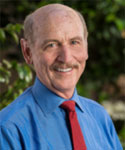 At age 63, after 27 years in clinical rheumatology practice, Stanford Shoor, MD, a rheumatologist at The Permanente Medical Group of Northern California, which is the physician practice serving Kaiser Northern California, found himself at a crossroad: “I was at a place in my career where I felt very comfortable dealing with uncertainty and trying to solve the puzzles of rheumatology,” he recalls. “But I was also at a point where I thought I had a lot to teach budding rheumatologists, given my wealth of experience treating patients. I wanted to give back as other rheumatologists had done for me. My knowledge base couldn’t be replicated in books or databases.”
At age 63, after 27 years in clinical rheumatology practice, Stanford Shoor, MD, a rheumatologist at The Permanente Medical Group of Northern California, which is the physician practice serving Kaiser Northern California, found himself at a crossroad: “I was at a place in my career where I felt very comfortable dealing with uncertainty and trying to solve the puzzles of rheumatology,” he recalls. “But I was also at a point where I thought I had a lot to teach budding rheumatologists, given my wealth of experience treating patients. I wanted to give back as other rheumatologists had done for me. My knowledge base couldn’t be replicated in books or databases.”
When he received a job offer to become a clinical professor of medicine and rheumatology at Stanford University in Palo Alto, Calif., he jumped at the opportunity. “It was a chance to work with world-class scientists and clinical researchers,” he says. “I could be at the cutting-edge of science experiments and clinical studies. In turn, I could teach fellows and residents how to most efficiently see patients and how to use observations and reasoning to formulate diagnoses.”
Since starting at Stanford in July 2011, Dr. Shoor has found it to be quite stimulating and different from Kaiser.
“I see many more unusual and difficult cases because it’s a referral center,” he says. “Knowledge constantly flows from teacher to student and vice versa. Every week, I attend grand rounds, [during which] colleagues discuss challenging, thought-provoking cases. I’m motivated to remain abreast of knowledge and to be well prepared. I’m constantly trying to improve and never feel completely confident. It’s been a renaissance, a restart to my career.”
A Good Match
Reflecting on the two institutions, Dr. Shoor says Kaiser’s main mission is to deliver healthcare. Stanford, on the other hand, has a three-pronged agenda—research, teaching and delivering healthcare.
“Although Stanford is strong in the first two areas, it doesn’t treat as many patients [as Kaiser], and it’s looking to determine how to care for a larger number of patients in a cost-effective manner while optimizing resources—which is where I can provide insight.
“Kaiser had to be cost effective in order to survive,” Dr. Shoor continues. “We had to deliver care within a specified budget every year. But traditionally, academic centers don’t have to operate as strictly, because their role also includes teaching and research. So Stanford tends to do more testing—and sometimes more invasive testing, which increases the cost of care.”

